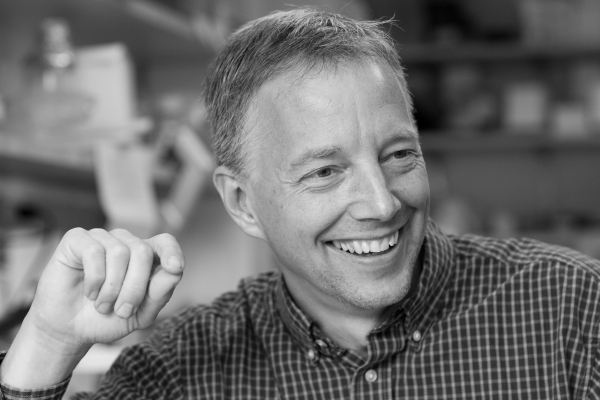Scorpion ‘juice’ could provide hope for cancer patients

Definitely, there‘s an ick factor when Dr. Jim Olson describes using "scorpion juice" to help people with cancerous brain tumors. But once you abolish the vision of him milking venom from Israeli Deathstalker scorpions, the ick decreases. Since he doesn‘t.
He takes the DNA of the scorpion and recreates it in the lab. When he changes the term to Tumor Paint, the image is far more palatable.
Palatable evolves into wonderful at the thought that Tumor Paint has the potential to help millions of cancer patients, presuming the clinical trials end up as positive as Olson hopes.
Olson, a Seattle-based oncologist specializing in children’s brain tumors, heads the team that developed Tumor Paint.
The basic idea was to develop a fluorescent substance that can be injected in the brain and would attach to only the cancerous cells. By lighting up the cancer cells, a surgeon doesn‘t guess which cells are cancerous and during surgery removes neither too much of the brain nor too little.
Tumor Paint is made from two chemicals: one is a protein derived from scorpion venom that attaches to the surface of cancer cells; the other is a nontoxic compound that fluoresces when exposed to near-infrared light.
The doctor explained his work when he visited Las Vegas looking for private money from an A-list group of hedge fund managers meeting at the Starbridge Capital Alternatives Conference at the Bellagio in May. "This year was mostly a cultivation event. We got to know a lot of people who have us in their sights," Olson said. "It was all about raising awareness."
He made more than 100 one-on-one contacts and didn’t ask for a dime. He hopes next year some hedge fund managers decide his team‘s work is deserving of a philanthropic partnership.
His pitch, which I‘ve heard, tends to be a jawdropper because of the potential. "Tumor Paint could help as many as 2.5 million cancer patients a year," Olson said. Not just brain cancer, but breast, colon, lung, prostate and skin cancers.
The goal is to replace chemotherapy treatments, which often damage healthy cells as well as cancerous cells, with a treatment without those frequent side effects.
He‘s looking for crowd funding and a philanthropic partner rather than a pharmaceutical company partner because "our goal is to help as many people as we can."
A pharmaceutical company needs to make a profit, so it opts for cures for frequent-occurring illnesses. Public funding is more about getting a life-saving product to the public that might help with even the rare illness.
Olson became a medical doctor in 1991 and began research in his lab in 2004, which lead to Tumor Paint. "I dream that before I retire, I will be able to walk into the room of a child with newly diagnosed brainstem glioma and tell them that there is hope for survival."
Clinical trials on Tumor Paint began in December 2013 with more than 30 adults, and in June two children were added to the trials. So far, he said, setbacks have been minor. Olson hopes Food and Drug Administration approval could come by 2018, if not sooner. By that time, several hundred people would have participated in the trials.
Olson, who works for the Fred Hutchinson Cancer Research Center in Seattle, is considered a pioneer of this new class of drugs called "optides," which don‘t hurt the healthy cells but only the cancerous ones. Olson‘s team has grown from himself and two people he hired in 2012 to 32 people on the research team.
"I‘ve never touched scorpion venom," he said with a laugh during our recent interview. But he knows how to put a scorpion‘s DNA to good use.
The creation of Tumor Paint has evolved into "Project Violet," named after one of Olson‘s patients who died at age 11 and donated her brain to research.
Project Violet will work on this news class of anti-cancer compounds by using molecules in nature. Not just scorpions but violets, sunflowers, sea slugs and thousands of other naturally occurring substances.
The website www.projectviolet.org provides more information on that aspect of cancer research.Olson hopes further research with optides could move beyond cancerous tumors and help with diseases involving the brain, including Alzheimer’s and autism.
His enthusiasm is boundless and contagious, making him the perfect pitchman.
Some potential contributors, large or small, might think it’s a pipe dream. Optimists might think about being part of a major breakthrough in cancer research. There are no guarantees.
Journalists enjoy reporting potential advances in cancer research. It gives us hope, for ourselves and the ones we love.
So I’m wishing Dr. Olson and his team the very best in their efforts.
Jane Ann Morrison‘s column appears Thursday. Email her at Jane@reviewjournal.com or call her at 702-383-0275.